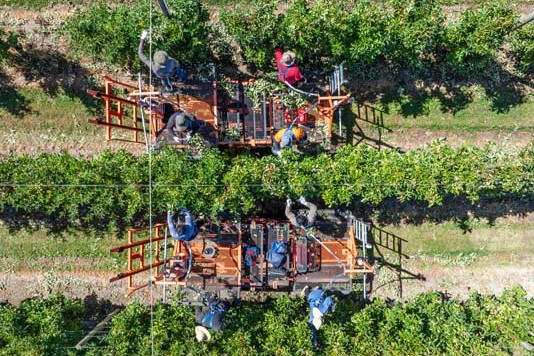Going frozen with sexed semen
New Zealand farmers will be able to buy frozen sexed semen straws from the majority of CRV Ambreed’s top bulls this season. By Sheryl Haitana.

Even with all the latest technology on offer, breeding results still come back to the quality of the bull, CRV managing director James Smallwood says.
“Irrespective of the technology whether it’s fresh or frozen sexed semen, it’s the bull that impacts fertility.
“The bull is going to do what the bull is going to do.”
New Zealand farmers will be able to buy frozen sexed semen straws from the majority of CRV Ambreed’s top bulls this season.
CRV has collaborated with Genus IntelliGen Technologies to bring a new, less-invasive, sexed semen technology to its Bellevue facility.
Providing frozen sexed semen instead of fresh gives Kiwi farmers the option to get the bulls they want to use across their top cows, rather than using fresh sexed semen from what bulls are on offer on the day, Smallwood says.
“That’s the difference between our product versus a fresh one, is that you’re getting what you ordered.
“If we are truly committed to genetic gain, it’s actually making sure we identify the good cows and spend the time identifying the bulls you want. Otherwise your rate of genetic gain is going to be compromised.”
There are not enough disadvantages for NZ farmers using frozen semen, with Genus guaranteeing a minimum of post thaw motility.
The benefit of this Genus technology is less damage to the cells, which creates greater degree of survival, mobility and better fertility.
The laser-ablation¹ semen sexing technology is gentler on the sperm cells than traditional sexed semen processes.
A sperm cell containing female DNA is heavier and more dense than male DNA. When cells are passing by detection laser, the software can then detect the difference in DNA content.
The system will then identify the female cells and use another laser to inactivate the unwanted cells.
“This cutting-edge technology does not subject semen cells to the high pressures, electric currents and shear forces that are used in the traditional sexed semen technology, which reduces stress on the cells as they are processed.”
Demand for sexed semen continues to increase in NZ, with CRV receiving triple the amount of orders last year.
Farmers need to look at spending more money as the investment rather than an expense, because they are building an asset, Smallwood says.
However, NZ is still lagging behind the rest of the world when it comes to using sexed semen technology.
The NZ dairy industry is using only about 5% of sexed semen, compared to Australia’s 15%, the European Union’s 30% and the United States up to 50%.
“If we are serious about doing more with less animals, we really need to ramp up the genetic gain. This is one way to get in there and do it really fast,” he says.
Technology available in the dairy industry has come a long way in the past five years, for sexed semen, genomics reliability and DNA testing. The technology is also becoming more accessible, more reliable and more affordable to farmers.
CRV is not far away from customised breeding solutions, where they will be able to provide farmers with genetic profiles of the top animals in their herd, giving them a profile of what animals work best in their system, Smallwood says.
Kiwi farmers run dairy cows under different systems, from DairyNZ System 1 up to System 5, and identifying the best cows and bulls to use for their tailored system will become even more important.
“That means we can accelerate your programme and make sure you’re getting the efficiency you want.
“That’s where we are heading very fast.”
This customised breeding solution is in the Netherlands and will be coming to NZ shortly, he says.
Farmers have a lot to consider when selecting genetics going forward, it’s not just about production, it’s about meeting the market’s environmental and animal welfare expectations. Having data onhand to make the decisions is key.
A big solution for Kiwi farmers is ensuring they are breeding the most efficient animals for their herd and ensuring they have good longevity.
“We need to be breeding cows that are highly productive, but also last longer.”
The NZ dairy industry has a 23% replacement rate, with a lot of youngstock contributing to the industry’s environmental footprint. Farmers could reduce that by only rearing replacements from their top cows.
“If we could get our cows to last a lactation longer and drop our replacement back to 20%, what does that do to our carbon footprint?”






